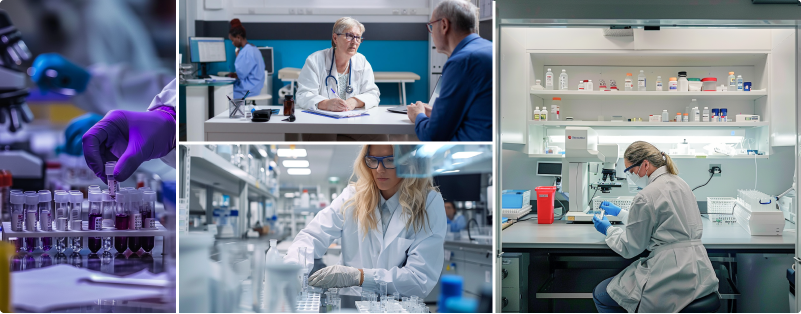Client Overview
The case study examines a leading healthcare provider that specializes in remote monitoring services for patients with neurological conditions. The organization aims to enhance patient care by utilizing advanced technology to improve outcomes and operational efficiency.
Organizational goal
Accurately assess brain functionality and detect abnormalities in a timely and cost-effective manner.
Challenges Identified
The healthcare provider faced several significant challenges that compromised its operational efficiency and ability to provide high-quality patient care:

01
Lack of Essential Features
- The existing healthcare management system was missing critical functionalities, resulting in inefficient manual processes and increased error rates.
02
Security and Compliance Risks
- Inadequate security measures left patient data vulnerable, risking non-compliance with HIPAA regulations.
03
Integration Difficulties
- The system struggled to connect with other healthcare platforms, hindering effective data exchange and cross-platform collaboration.
04
Resource Management Issues
- Managing physician schedules and matching the right specialists to patients proved challenging, potentially delaying diagnoses.
Implemented Solution
To address these challenges, a comprehensive solution centered around the Advanced Monitoring and Data Management System was implemented.

01
Enhanced Functionalities
- The Advanced Monitoring and Data Management system integrated essential features for contract management, resource allocation, and patient monitoring, which addressed the lack of necessary functionalities. This reduced the reliance on manual processes and minimized errors.
02
Security Enhancements
- The introduction of Single Sign-On (SSO) using Microsoft accounts improved security measures and compliance with HIPAA regulations. This change safeguarded patient data and streamlined access for authorized users
03
Centralized System Integration
- By consolidating contract management, patient care, and billing into a centralized system, the healthcare provider improved interoperability. This integration facilitated seamless data exchange with other healthcare systems, overcoming previous integration difficulties.
04
Automated Physician Scheduling
- A centralized repository was created for protocols, ensuring version control and consistency in experiment processes.
Observed Outcomes
The implementation of the solution led to significant improvements for the healthcare provider:
Operational Efficiency
- Administrative task time decreased significantly, allowing staff to focus more on patient care and reducing the risk of manual errors
Enhanced Compliance
- Improved security measures led to better adherence to HIPAA regulations, minimizing the risk of data breaches
Improved Patient Care
- Real-time monitoring capabilities and emergency protocols enhanced response times for critical patient situations, significantly improving patient outcomes
Financial Transparency
- Automated billing processes reduced discrepancies, providing clearer financial insights and supporting pricing strategy optimization
Conclusion
This case study exemplifies the critical importance of addressing operational challenges in the healthcare technology industry. By implementing a comprehensive solution, the organization improved its efficiency and quality of care. This proactive approach ensures that the organization is well-equipped to meet future demands while maintaining a commitment to excellence in patient care and operational integrity.
